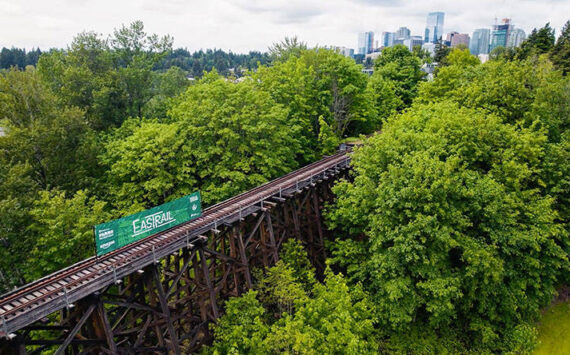Watching Mayor McGinn and his anti-tunnel partisans laboriously stoke fears of “cost overruns” is like watching racist Tea Partiers complain about budget deficits and socialism. It’s kinda obvious what their real issue is, but they’ve fastened on some other concerns that they think can get more traction.Seattleites do not want to reopen the tunnel debate. Even McGinn knows that, which is why he did the infamous, last-minute flip-flop that made his election possible. So then: How to sow opposition to the tunnel while not owning up to your real intentions? I know–socialism! I mean, overruns!What makes the overrun-mongers, such as the Sierra Club, most ridiculous is they’re generally the same crowd who’ve been most fervent about Sound Transit’s light rail–which is pretty much the cost-overrun project par excellence of recent history. (In brief, a Phase I project that was supposed to cost $5 billion over ten years is costing three times that over 25.) And those Sound Transit overruns were hardly driven by tunneling problems alone. Even the surface construction on Martin Luther King Way was a sinkhole of delays, redos, and busted budgets.Sound Transit photo.Light rail construction on MLK: oh yeah, this was a cake walk.But, amusingly, the anti-tunnel people only want to talk about such problems as they relate to tunnels. (Or one tunnel in particular. None of them seem to be questioning plans for tunneling light rail to the U District.) So, for example, we heard this week from Eric de Place of the Sightline Institute. He posted a retort to Laura Onstot’s recent story, in which she noted that, in King County’s view, the downtown transit tunnel actually came in under budget when it opened in 1990. Not at all, says de Place. The project was way over-budget, he insists, though not due to excavation per se. “Even when the actual tunnel digging goes okay,” he observes, “there are numerous related problems that can crop up. In the case of the downtown tunnel, there were problems with station positioning, worker safety, complaints from downtown property owners, and even violation of rules about materials sourcing (including a flare-up about marble from Apartheid-era South Africa).” De Place chalks it up to “predictable human traits.”Hey, no kidding. I seem to remember exactly those kinds of problems–contractor foul-ups, citizen lawsuits, constant changes in route planning–affecting the construction of Sound Transit’s light rail…x 100. In other words, they’re nothing exclusive to tunnels, and are typical of pretty much any big public-works project.Then there’s Dan Bertolet, a longtime light-rail believer and tunnel/viaduct hater. Back in 2008, when a Sound Transit expansion was on the ballot and a few of us were actually bothering to raise questions about the proposal–whether it penciled out, whether the enormous cost could be justified by the benefits–we were disdained by Mr. HugeAss for our lack of vision. Of course, you can nitpick about costs and ridership and risks, opined Bertolet, but that’s for the little people. “We must be Deciders,” he said. “As in, 100% commitment, zero doubt.”But now, oh my goodness, now that we’re talking about the waterfront tunnel, we’ve got to pay very careful attention to those spreadsheets. These days Mr. HugeAss warns us very solemnly about “the unanticipated complexities that inevitably arise when a mega-project starts to get real.” Hey, no shit! I think some of us might have noticed that back during the light-rail construction days. It’s clear that what HugeAss and Sightline and McGinn and all the rest of the crew mean is: We need to be very concerned about those complexities whenever it’s a project we don’t like.
More Stories From This Author
King County seeks renewal for parks levy in primary election
Levy would fund multiple projects in cities across the county. Primary election is Aug. 5.
Fourth of July weekend weather in King County
Expect mostly sunny and warm weather for the Fourth of July weekend in the Puget Sound region. Below is the…
King County jail audit finds issues in behavioral health services
Addressing the issues could reduce the risk of reoffending.





